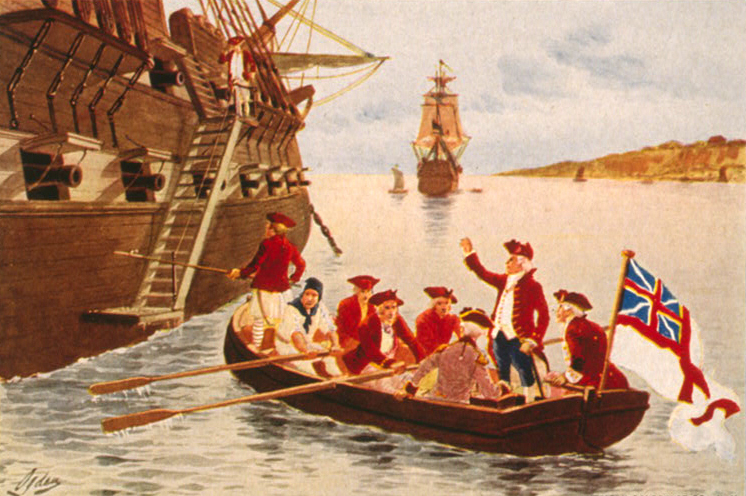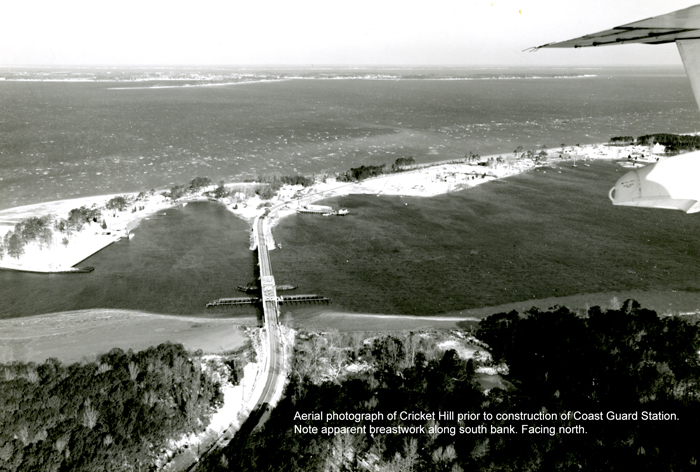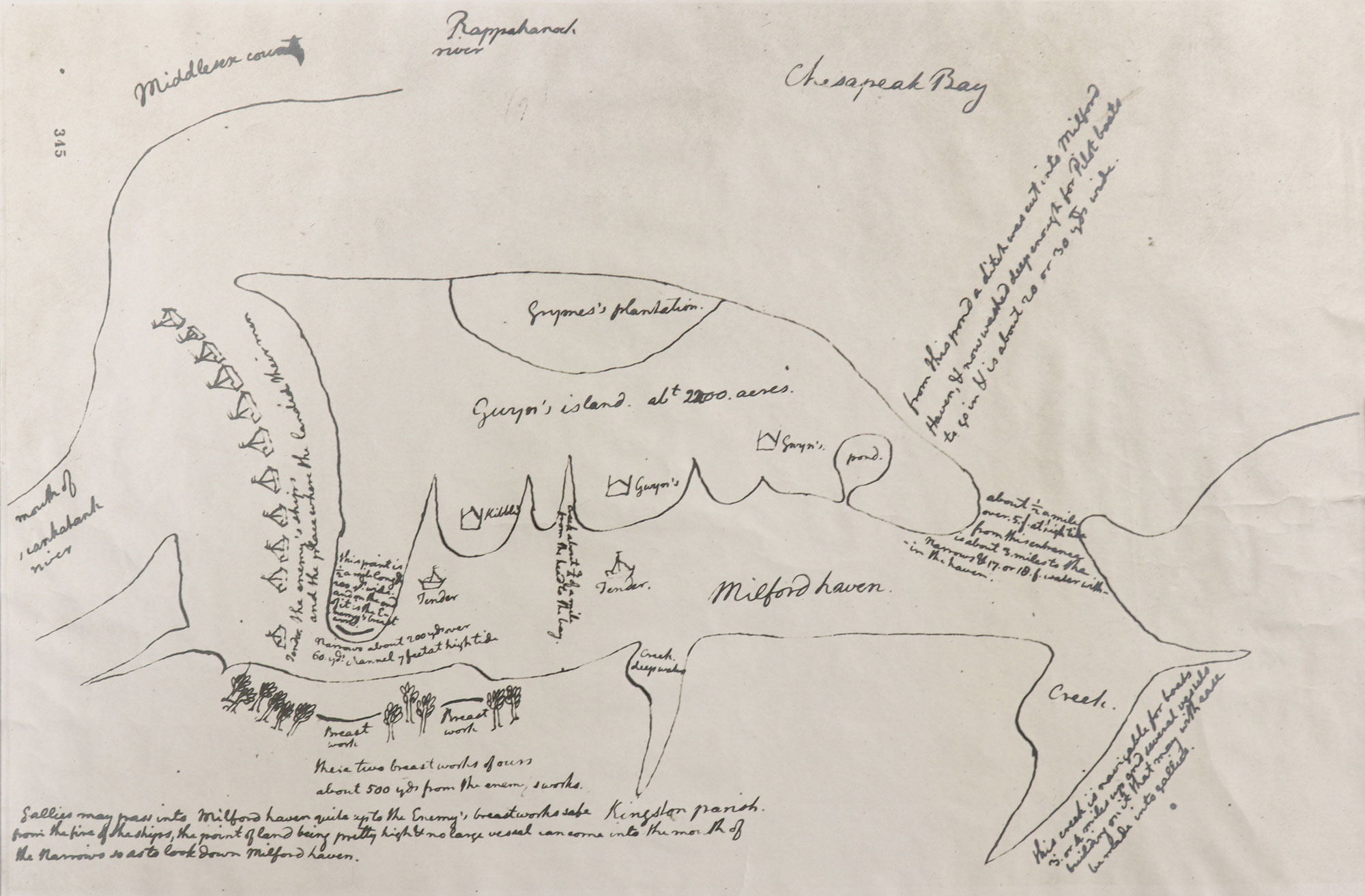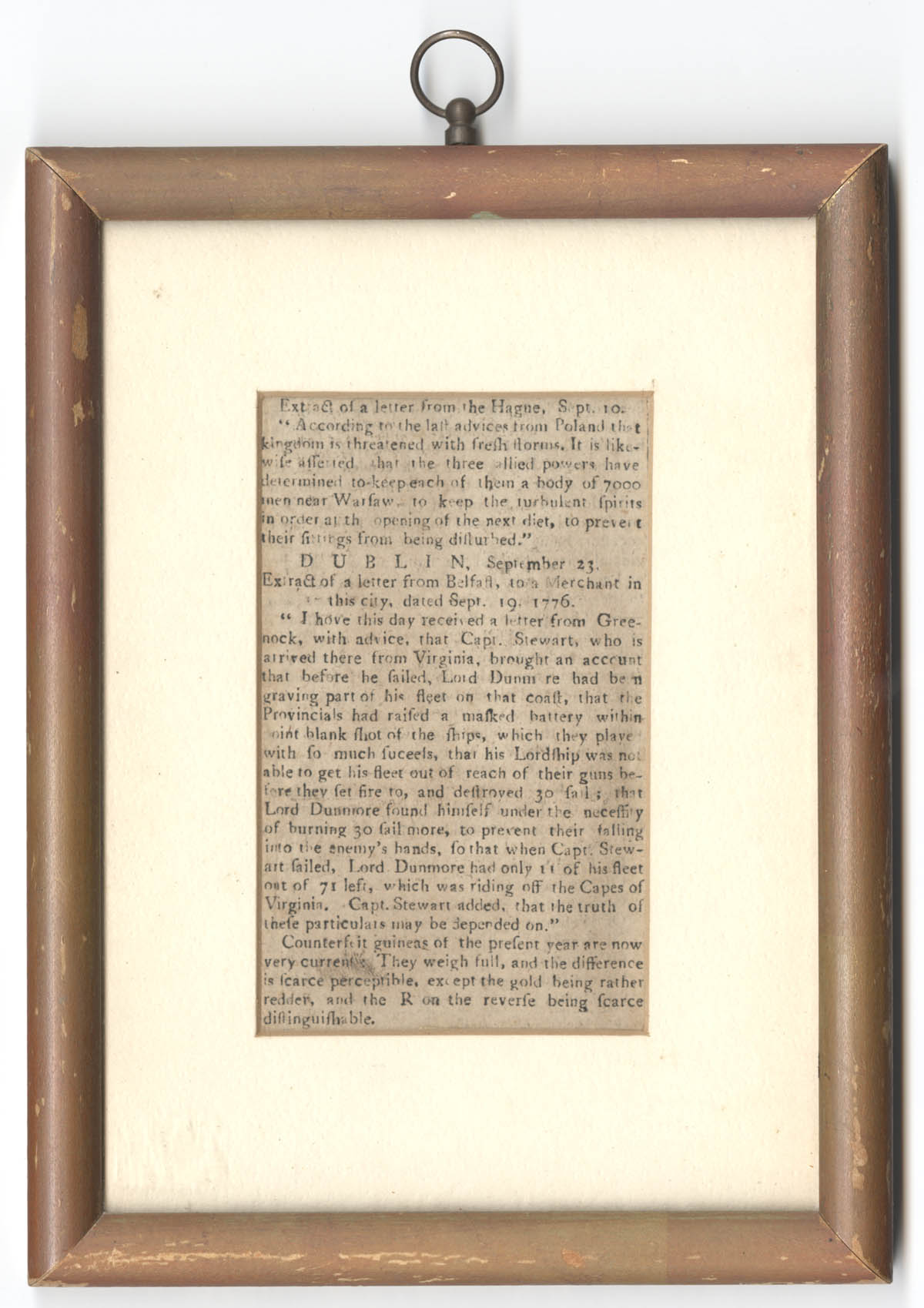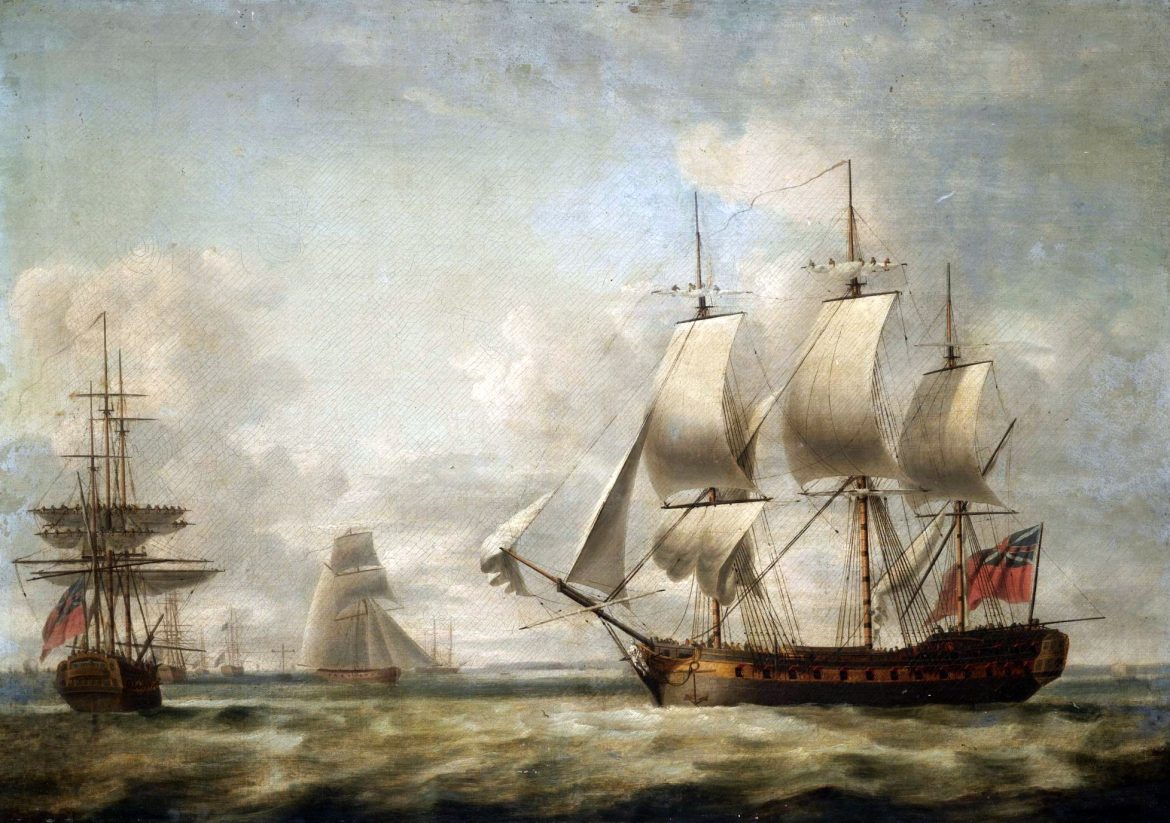In May 1776, after the burning of Norfolk, Virginia, Lord Dunmore’s fleet of about 82 ships ran up the Chesapeake Bay and set anchor in the waters of Milford Haven and Hills Bay off shore of Gwynn’s Island in what is now present day Mathews County. Dunmore’s ships had hardly dropped anchor before men were sent to shore to obtain water, provisions, and build entrenchments. 100 soldiers of the 14th Regiment, 100 marines, 150 volunteers from Norfolk, 50 seamen, and about 300 African-Americans were ultimately stationed at various points on the island.

The island, then owned by Humphrey Gwynn, was inhabited by ten or twelve families. Dunmore seemed pleased with his new haven of refuge:
“… there was no place (known to me) that appeared so eligible as the one we now occupy, and indeed so it has proved, for a finer harbor never was seen. We found on this Island (which contains two or three and twenty hundred acres of land) a considerable quantity of stock of different kinds, with great abundance of fish on all sides of it. The only fault that I can find to it, that it lies too near the main, which the Rebels occupy, all around us, as the haven between it and the main in some places don’t exceed two hundred yards wide.”1
On the mainland, the patriots led by General Andrew Lewis of Augusta County, threw up earthworks and brought cannons for defense of Cricket Hill. Lord Dunmore, who was convinced that the Americans couldn’t overtake his fortified position on Gwynn’s Island, dismissively dubbed them “crickets.”2 Lewis noticed on the morning of July 9, that the Dunmore was exposed to two 18-pound guns and ordered the gunners to open fire at ebb tide. The Dunmore was hit a dozen times piercing her hull, killing the boatswain and taking off the leg of a gunner and the arm of a sailor. One canon ball entered the cabin, smashed the governor’s china, and sent a splinter into Lord Dunmore’s leg. The Americans “fired scarcely a shot that did not find a mark among the ships.”3 The British, without hope of aid, withdrew from Gwynn’s Island by July 13 taking the last royal governor from Virginia.
1 Percy B. Caley, Dunmore, Colonial Governor, New York and Virginia, 1770-1782 (unpublished PhD. dissertation, University of Pittsburg Library, 1940), p. 811.
2 Martha W. McCartney, Mathews County Virginia Lost Landscapes, Untold Stories (Petersburg, Virginia, 2015), p. 206.
3 Caley, Colonial Governor, New York and Virginia, 1770-1782, p. 835.
Gwynn's Island map by Thomas Jefferson
Thomas Jefferson, Governor of Virginia, made a sketch map of Gwynn's Island (undated) identifying the positions of the British fleet and breastworks, plantation houses of Keeble, Gwynns, and Grymes, and the position of Continental breastworks at Cricket Hill.

Milton Murray II Collection, #8-22, ARCHIVES Box 19 OV
Mathews Archives, Mathews Memorial Library
Leicester Journal, September 24, 1776: An account of Lord Dunmore at Battle of Gwynn's Island. Headline: "Dublin, September 23. Extract of a letter from Belfast, to a Merchant in this city dated Sept. 19, 1776."
“… that his Lordship was not able to get his fleet out of reach of their guns before they set fire to, and destroyed 30 sail; that Lord Dunmore found himself under the neceffity of burning 30 sail more, to prevent their falling into the enemy’s hands… Lord Dunmore had only 11 of his fleet out of 71 left…”

Margaret Perritt Collection, #114-1, ARCHIVES Box 25 R
Mathews Archives, Mathews Memorial Library
A List of Ships in Lord Dunmore’s Fleet at Gwynn’s Island, July 10th 17761
The British burned several of their vessels and the Americans captured the sloop tender Lady Charlotte, 3 guns, a schooner, and a pilot boat. The following vessels remained after the Battle of Cricket Hill

HMS Roebuck, frigate, 44-guns, Commodore [Andrew Snape] Hamond.
Gaze, schooner tender, belonging to the HMS Roebuck.
HMS Fowey, frigate, 24-guns, Commodore [George] Montagu.
Lady Gage, sloop tender, belonging to the HMS Fowey.
HMS Otter, sloop, 14-guns, Commodore [Matthew] Squires.
Fincastle, sloop tender, 12-guns, belonging to the HMS Otter.
HMS Dunmore, frigate, 4-guns.
William, 2-guns, a part of the 14th Regt. on board.
Anna, a ship barricaded with a part of the 14th Regt on board.
Dun Luce, a ship occupied by the Queen’s Own Loyal Virginia Regiment raised by Lord Dunmore.
Grace a ship belonging to and occupied by Mr. Fleming and family.
Levant, a store ship, in which Governor Eden has taken a passage.
Fincastle brigantine, belonging to and occupied by Niel Jamieson.
Dolphin, brigantine, belonging to and occupied by Hector McAlester.
Maria, brigantine, occupied by John Allason and family.
Fanny, brigantine, occupied by Dr. McCaa and family.
Betsy, brigantine, occupied by Capt. Boynoe and family.
Betsy, brigantine, occupied by Dr. Coakley and family sometime with negroes.
Betsy, brigantine, occupied by Mr. Feener and family.
A Spanish Snow Prize Master, Super Cargoe, Capt & Crew on board.
Helena, brigantine, belonging to Roger Steuart, occupied as prison.
William & Charles, brigantine, from Barbadoes, on board rum and sugar.
Unicorn, snow, on board of which is a Black Smith Shop.
Hammond, brigantine, occupied by Mr. John Hunter and Mr. Sprowle’s family.
Thomas, schooner, occupied by William Calderhead and family.
Cambell, sloop, occupied by Mr. Farmer and family.
Peace & Plenty, sloop, belonging to and occupied by Mr. Eilbeck.
Lady Augusta, sloop, belonging to and occupied by Capt. Lowes.
Lady Gower, sloop tender, Commander John Wilkie.
Lady Stanly, sloop tender, Commander William Younghusband.
Lady Susan, sloop tender, Commander Bri[d]ger Goodrich.
Seven sloops occupied by Messrs Spedden and Goodriches families.
Two schooners occupied by John Brown and family.
Logan, ship belonging to and occupied by Mr. Logan & family.
Most of the other Vessels are small craft and occupied by trades people & negroes. Vessels that are not fit to go to sea.
The Lively, frigate, 30 or 36-guns, cruising of[f] the Capes.
1 William Bell Clark, Naval Documents of the American Revolution (Govt. Printing Office, 1970) Vol. 5, p. 1021.
Archaeological and Management Surveys of Cricket Hill
An archaeological investigation was conducted at Cricket Hill, a National Historic Landmark, in early February to mid-March 1987. Part of the landmark had been proposed for development of the Gwynn’s Island Boat-Tel. The surveys were compiled by the James River Institute for Archaeology, Inc.
Martin Diggs Collection, 45-9, ARCHIVES Box 18 R
